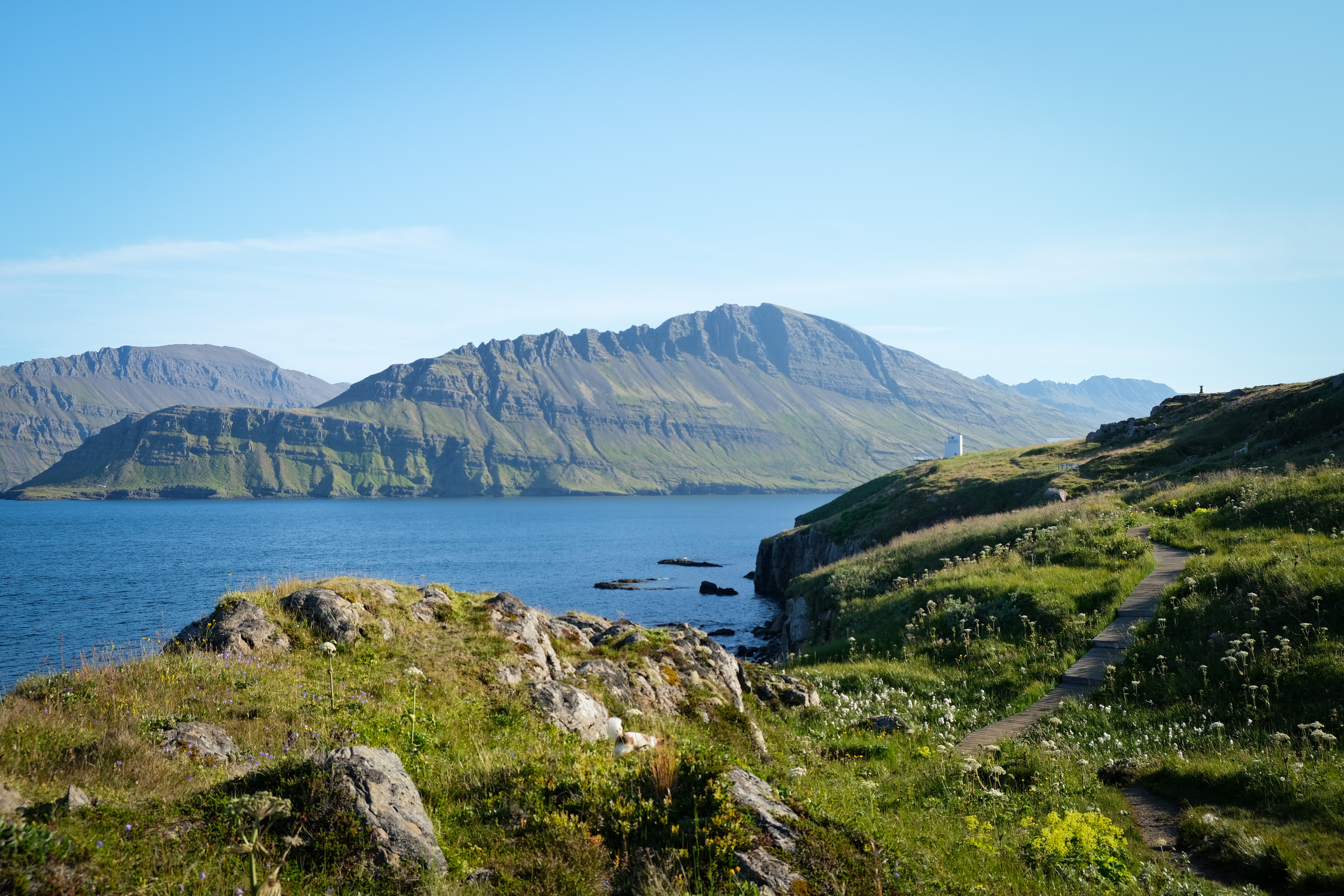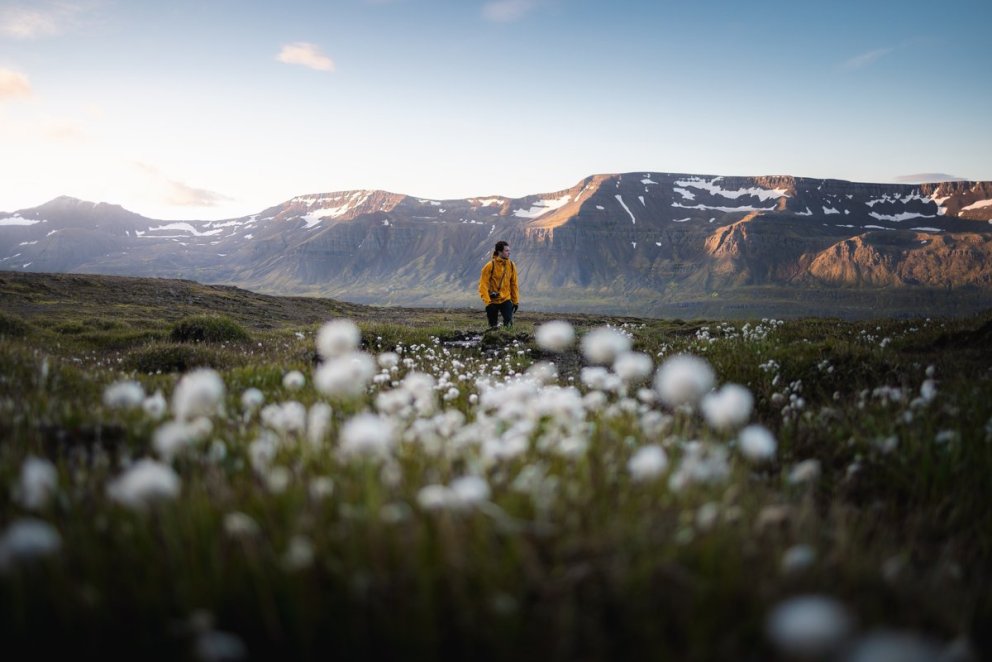Top 10 Hikes to Explore in Austurland in the Summer of 2025
Below you’ll find 10 of our Hiking Highlights in Austurland to discover this summer.
1. Stórurð
Stórurð boulders is one of Iceland's most spectacular sights and has gained more popularity amongst hikers in recent years. This rocky area was created towards the end of the last Ice Age, when retreating glaciers deposited the enormous boulders you see today. Reaching Stórurð takes some effort, as the main route from Vatnsskarð Service Station is about 15 km round trip. It takes roughly two and a half to three hours each way, so you’ll need to be reasonably fit to contemplate it.
Nevertheless, the reward is extraordinary: a surreal landscape of giant boulders, clear turquoise pools, and sweeping views of the Dyrfjöll mountains, one of the most striking sights in all of Iceland. There is also a shorter route from Njarðvík, but it can be quite muddy, so be sure to check conditions before you go.
Due to lingering snow and wet terrain, this hike is generally only suitable from mid-July until the first snows of autumn.
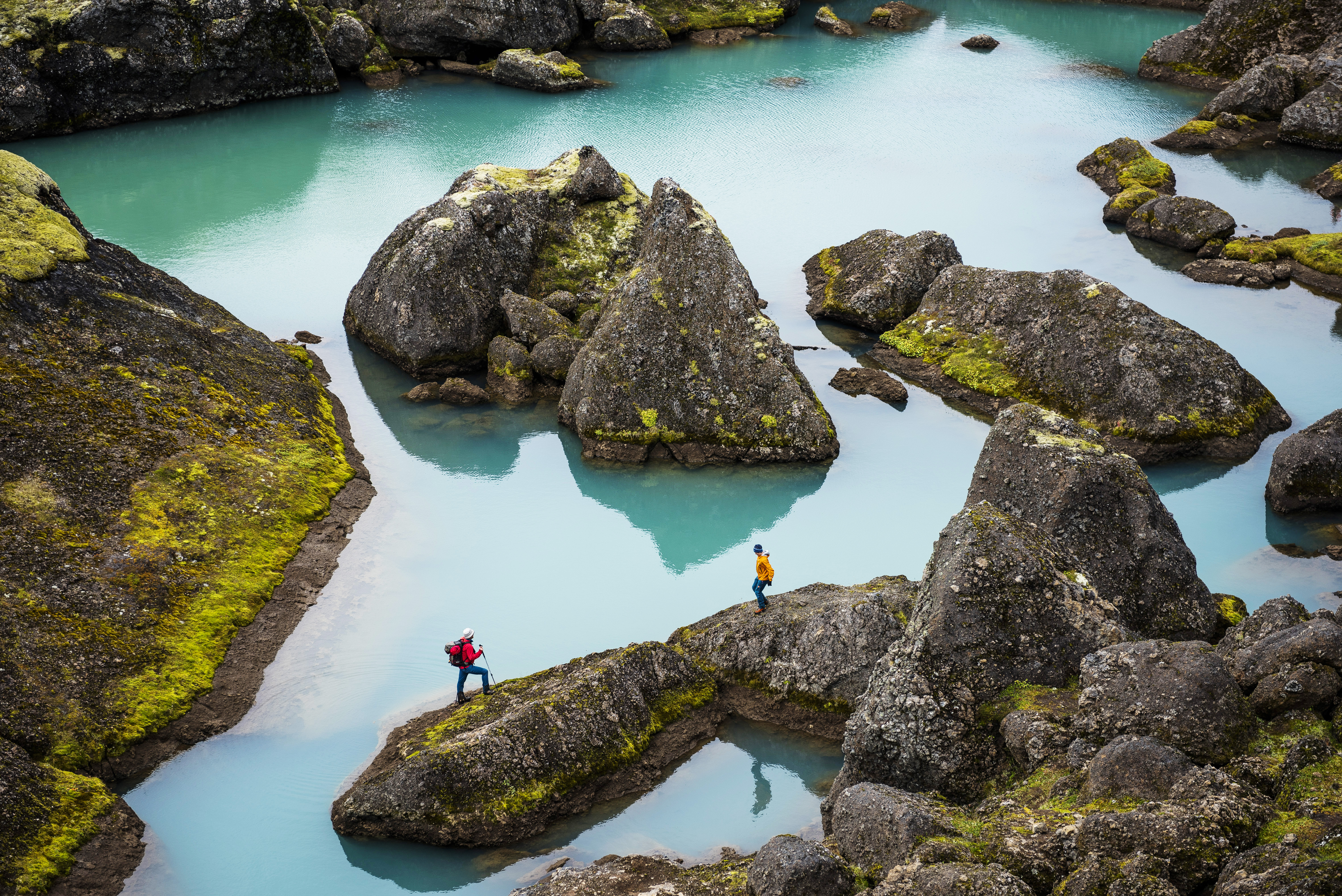
2. Fossahringurinn
This 8 km loop is one of Austurland’s most rewarding half-day hikes, taking you through a rugged and varied highland landscape. The trail starts and ends at Laugarfell Mountain Hut and features five waterfalls, along with breathtaking views of Snæfell mountain and a dramatic canyon carved by centuries of flowing water.
The trail takes around 2–3 hours to complete, depending on conditions and pace. While it’s not overly difficult, there are a few steep and rocky sections, so sturdy footwear is recommended.
After the hike, you can soak your tired legs in Laugarfell’s natural hot spring. This trail is typically accessible from mid-June once snow has melted in the highlands.

3. Bjólfur
Towering 1,085 meters over Seyðisfjörður, Mount Bjólfur offers one of the most rewarding panoramic views in Austurland. This 5.8 km one-way hike begins at the Stafdalur ski lodge and follows an old mountain track originally laid for fiber-optic cable installation.
The route crosses the Stafdalsá river, passes a striking waterfall, and continues steadily up the ridge. The summit features a rock cairn and guestbook, but if you descend slightly beyond the top, you’ll reach a dramatic viewpoint directly above the fjord and the town below.
This is a moderate out-and-back hike with around 645 meters of elevation gain, taking about 3 to 4 hours round trip. Snow can linger on the upper slopes, so it’s best done from late June onward.

4. Víknaslóðir
Víknaslóðir is a magical hiking route through remote landscapes in East Iceland. The trail leads through deserted fjords, colorful rhyolite mountains, and remnants of old settlements, where beautiful coves and inlets blend with dramatic mountain views in every direction.
The hike begins in Borgarfjörður eystri and is typically completed in three days, though it is possible to extend it to four days by continuing all the way to Seyðisfjörður. Accommodation is available in the huts of Ferðafélag Fljótsdalshéraðs in Breiðavík, Húsavík, and Loðmundarfjörður, and camping is also permitted in designated areas.
Víknaslóðir offers a unique nature experience and deep tranquility in striking surroundings, often with few others around. The best time to hike this route is from late June to early September. We encourage visitors to look into the guided hikes offered by Ferðafélag Fljótsdalshéraðs to enjoy the trail in good company with local guides.
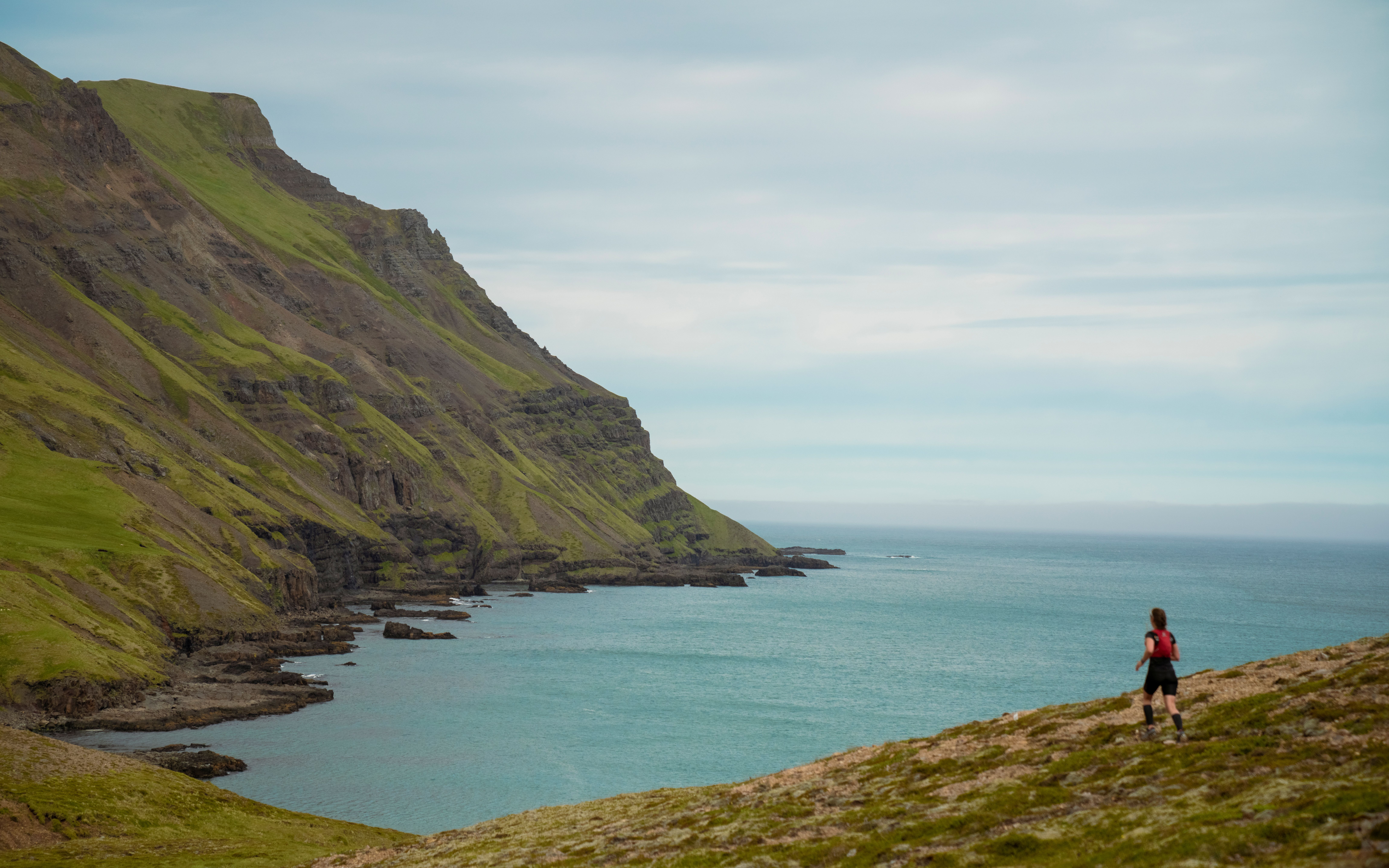
5. Stapavík
Stapavík is a scenic coastal trail rich in both natural beauty and local history. The hike begins at Unaós farm, just east of the town of Egilsstaðir, and follows the Selfljót river to its mouth where it meets the black sands of Héraðssandur. The path continues toward the remote cove of Stapavík, once used as a landing site for ships in the early 20th century.
The round-trip hike is around 9 km and takes about 2 to 3 hours. The route is relatively gentle, making it suitable for most walkers, though the open landscape means it can be windy at times. Along the way, you’ll be treated to beautiful views of the coastline and the colourful peaks of Hellisheiði Eystri.
Stapavík itself is a dramatic spot where steep cliffs meet the open sea. For the brave, a cold dip in the Atlantic from the black sand beach is highly recommended.
This trail is best tackled from early spring through late autumn.
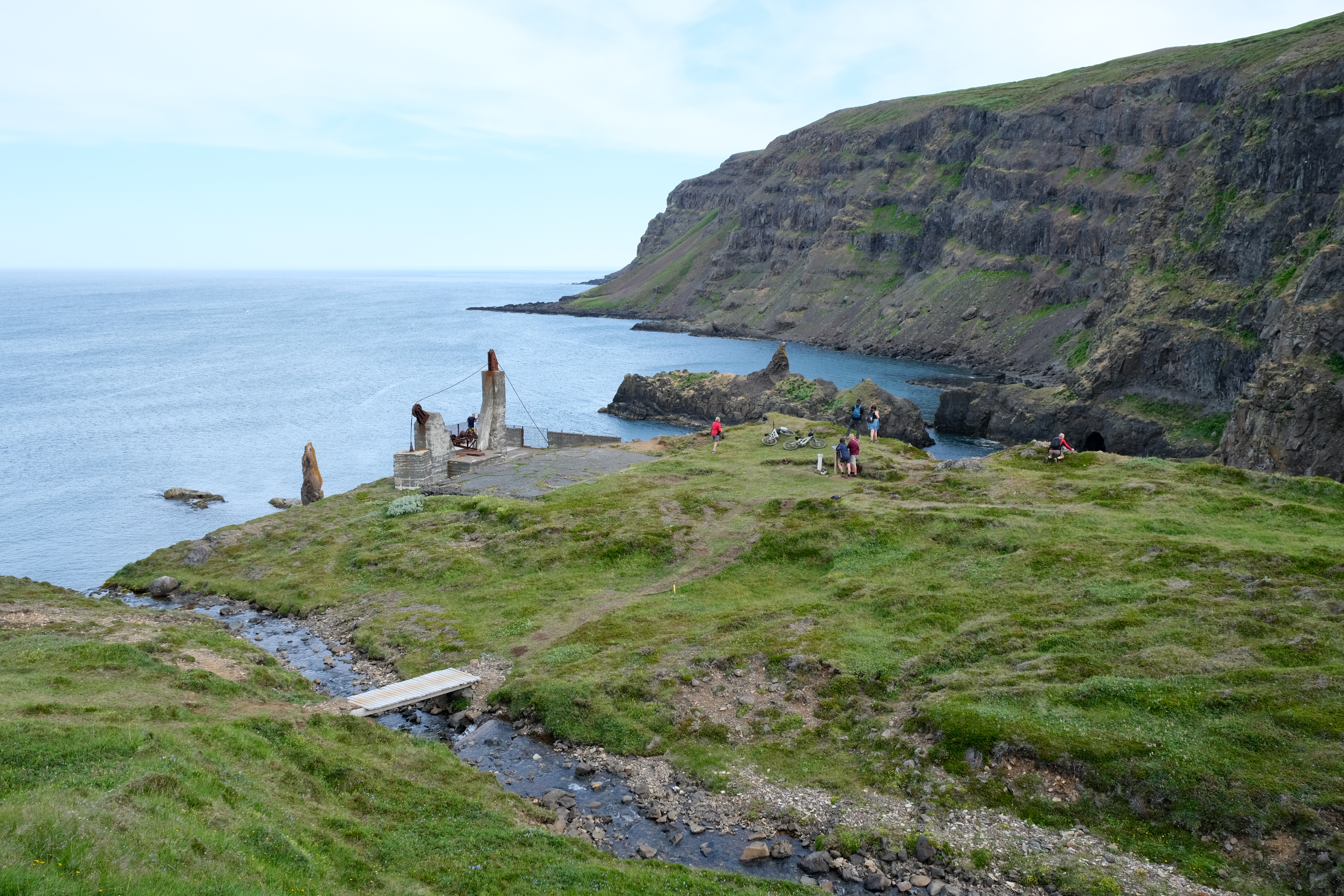
6. Steinboginn í Jafnadal
Tucked into the slopes of Mount Álftafell above the Jafnadalur valley, this natural stone arch is a hidden gem for hikers seeking a short but rewarding outing. Formed by centuries of erosion, the arch is a striking example of Iceland’s raw geological beauty.
The trail begins in the village of Stöðvarfjörður and leads through the peaceful Jafnadalur valley. Along the way, you'll pass Einbúi, “The Hermit”, a solitary rock formation that rises dramatically from the valley floor. After that, the path becomes more techically difficult and rocky and continues uphill toward the arch, offering views of the surrounding mountains and fjord.
This hike is suitable for hikers with some experience, elevation gain is around 650 meters and the hike takes about 3 hours round trip. The route is best enjoyed from late spring through early autumn, when the trail is clear and conditions are favourable.
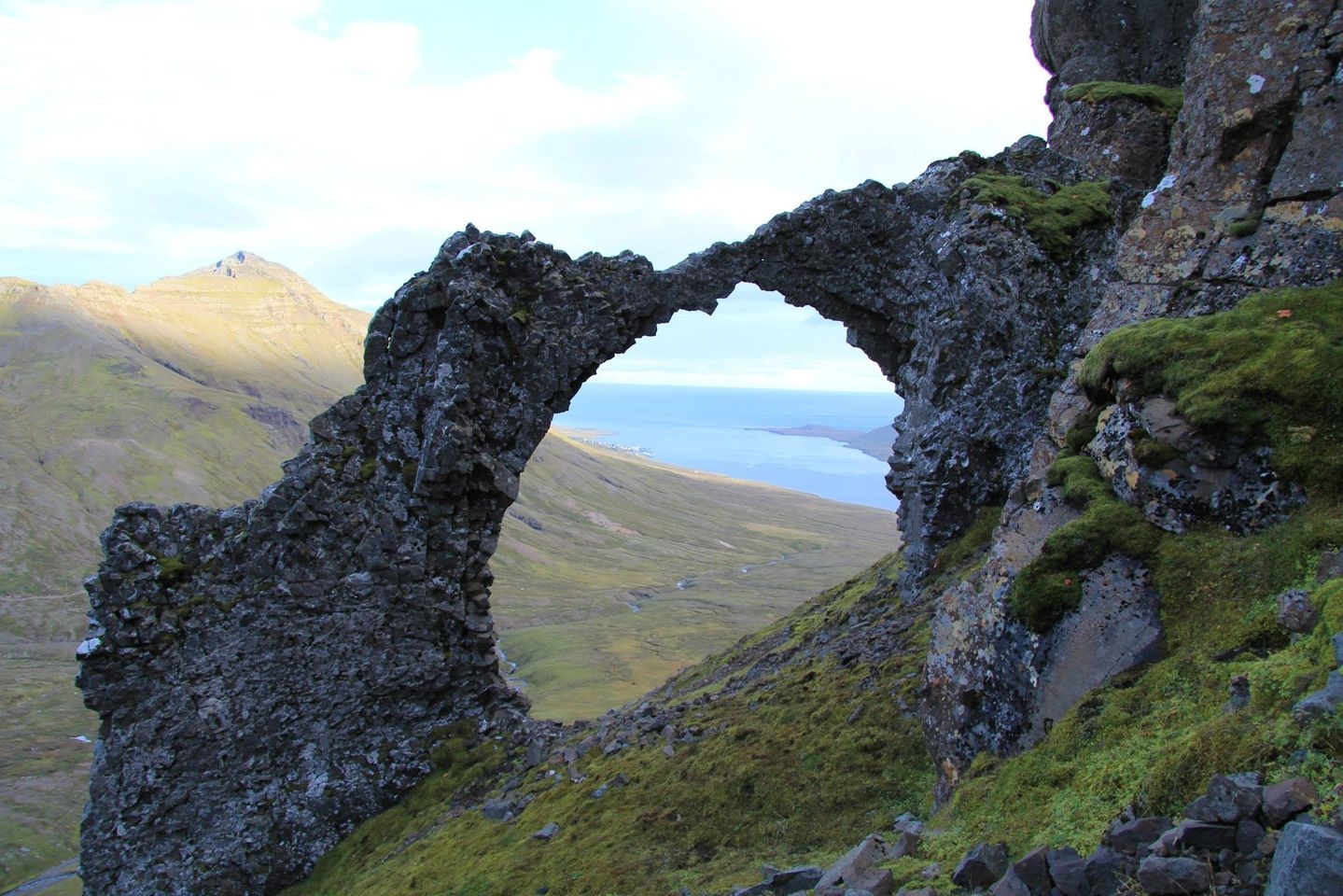
7. Gerpissvæðið
Gerpissvæðið, located between Reyðarfjörður and Neskaupstaður, is a hiker's paradise. The area features a network of marked trails that wind through dramatic landscapes, including steep cliffs, secluded coves, and verdant valleys. One of the highlights is Gerpir, Iceland's easternmost cape, rising 661 meters above sea level and believed to be home to the country's oldest cliffs, dating back approximately 12 million years.
While there are several day hikes suitable for independent trekkers, embarking on a multi-day trek through Gerpissvæðið's rugged terrain requires careful planning and expertise. Due to the area's remote nature and challenging conditions, it is strongly recommended to hire a certified local guide for multi-day excursions. Guides can provide valuable insights into the region's geology and history, as well as ensure safety and navigation through less-travelled paths.
For those interested in exploring Gerpissvæðið, detailed hiking maps are available at local information centers and shops in Fjarðabyggð. The best time to hike in this area is from mid-June to early September, when trail conditions are most favourable.
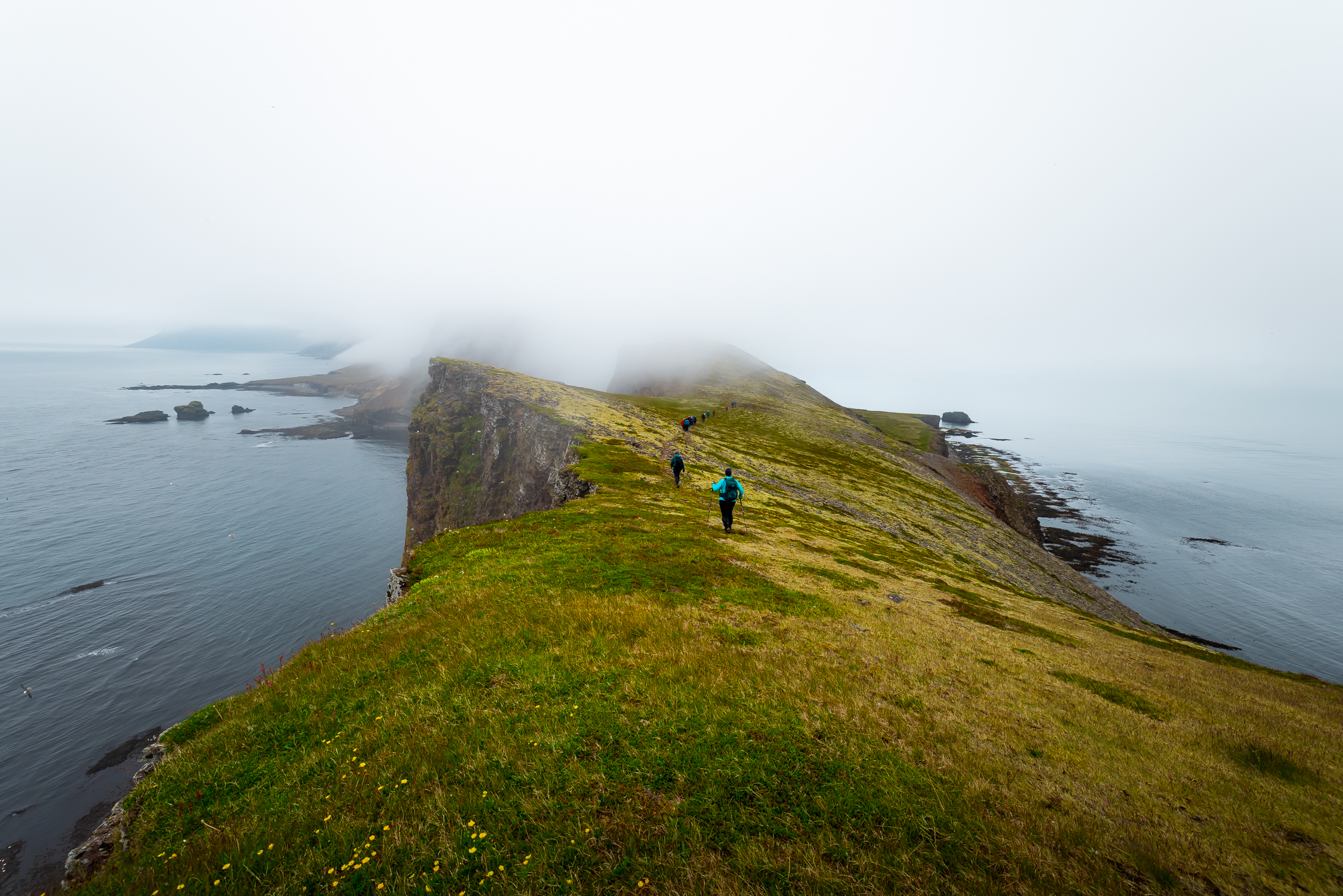
8. Fuglabjarganes
Fuglabjarganes is a scenic coastal trail located on the north side of Vopnafjörður’s coastline in East Iceland. This area is renowned for its diverse coastline, dramatic sea cliffs, and abundant birdlife, making it a haven for nature enthusiasts and birdwatchers alike.
The hike begins near Road 913 and follows a 6 km circular footpath that takes you along the beach to the headland, where high bluffs descend into the sea. Along the way, you'll encounter rock pillars rising from the ocean and enjoy panoramic views across the open sea. The terrain includes narrow sheep paths, grassy areas, and small river crossings, which may be swampy after rain.
This trail is best enjoyed from April to October when conditions are most favourable. Please exercise caution near the cliff edge.

9. Þerribjörg
Þerribjörg Sea Cliffs offer one of Austurland’s most dramatic coastal hikes. Located east of Hellisheiði Eystri, this trail leads you through a colorful rhyolite landscape shaped by ancient volcanic activity. The path descends a rocky slope to Múlahöfn, a secluded cove framed by towering cliffs and massive rock pillars.
The round-trip hike is approximately 10 km and takes about 3 to 4 hours to complete. While the trail is moderately challenging due to its rocky and uneven terrain, the breathtaking views of the sea cliffs and the serene atmosphere make it a rewarding experience for seasoned hikers.
This trail is best tackled from late spring through early autumn.
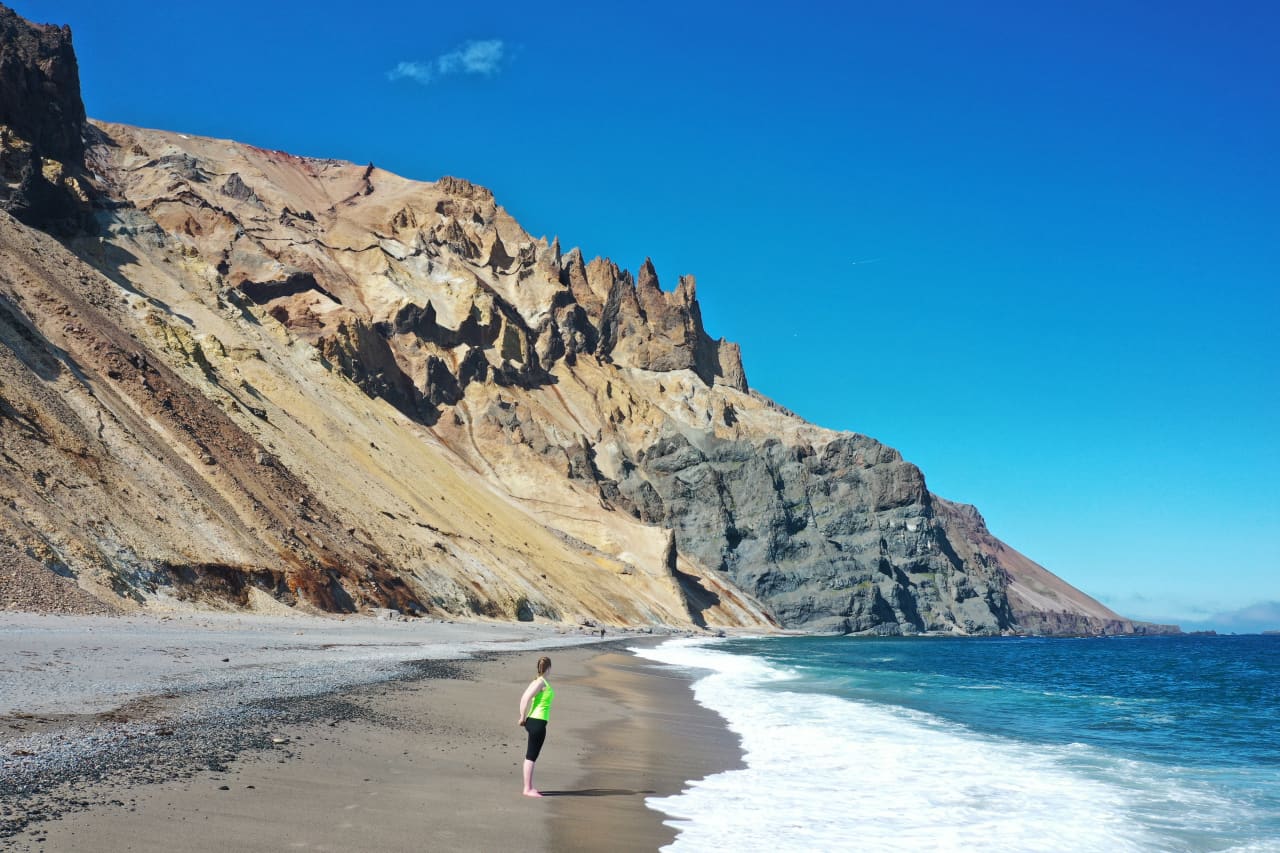
10. Neskaupstaður Nature Reserve
Iceland's first official nature reserve, established in 1972, the Neskaupstaður Nature Reserve is a haven of diverse landscapes and rich biodiversity. Stretching from Stórilækur toward the ocean, the reserve encompasses varied terrains, including steep cliffs, coastal areas, and small waterfalls.
The area is renowned for its abundant flora and fauna. Bird enthusiasts can observe species such as ravens, thrushes, fulmars, puffins, and eider ducks nesting along the cliffs and shoreline. You could even spot seals! The reserve's unique geological features, including caves carved by ocean waves like Páskahellir add to its allure.
A marked trail leads visitors from the edge of Neskaupstaður to Páskahellir, offering panoramic views of Norðfjörður Bay and the surrounding landscapes. This trail is accessible year-round, although caution is advised in snowy and icy conditions.
Visitors are encouraged to respect the natural environment by staying on designated paths and refraining from disturbing wildlife or vegetation. This ensures the preservation of the reserve's pristine condition for future generations.
